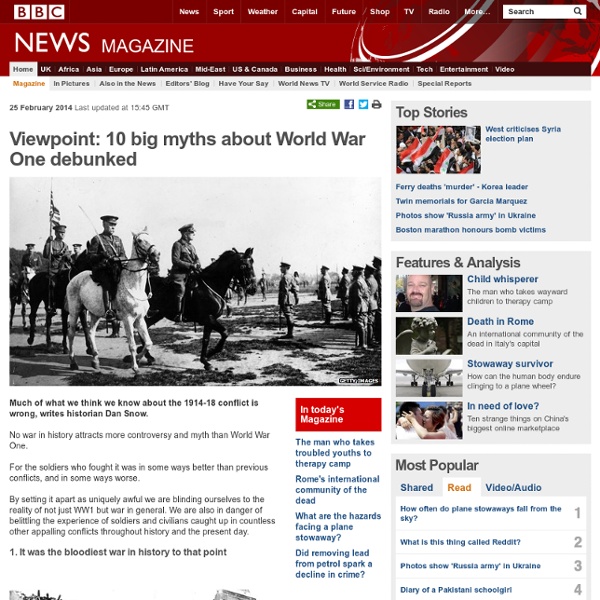Worksheets - Authoritarian and Single Party States
Chapter 2 - Juan Peron and Argentina Worksheet 2.1 Argentine Culture [Word]| [PDF]| Worksheet 2.2 Social Policies [Word]| [PDF]| Worksheet 2.3 Eva Perón and the Role of Women [Word]| [PDF]| Worksheet 2.4 Peronist Propaganda [Word]| [PDF]| Chapter 3 - Fidel Castro and Cuba Worksheet 3.1 The Success of the Cuban Revolution [Word]| [PDF]| Worksheet 3.2 Cartoon Analysis [Word]| [PDF]| Worksheet 3.3 Cuba, Agrarian Reform and the USA [Word]| [PDF]| Worksheet 3.4 Castro, Freedom and Democracy [Word]| [PDF]| Chapter 4 - Josef Stalin and the USSR Worksheet 4.1 Stalin's Rise to Power [Word]| [PDF]| Worksheet 4.2 Soviet Industrialization [Word]| [PDF]| Worksheet 4.3 Opposition and Single-Party Regimes [Word]| [PDF]| Worksheet 4.4 European Right-Wing Governments [Word]| [PDF]| Worksheet 4.5 The Baruch Plan [Word]| [PDF]| Chapter 5 - Mao Zedong and China Chapter 6 - Julius Nyerere and Tanzania Chapter 7 - Gamal Abdel Nasser and Egypt
World War II : Documents
World War II : Documents Agreement Between the Governments of the United Kingdom, the United States of America, and the Union of Soviet Socialist Republics, and the Provisional Government of the French Republic on Certain Additional Requirements to be Imposed on Germany; September 20, 1945 Agreement Between the United Kingdom and the Union of Soviet Socialist Republics : July 12, 1941 Agreement for the Provisional Administration of Venezia Giulia; June 9, 1945 Agreement Relating to Prisoners of War and Civilians Liberated by Forces Operating Under Soviet Command and Forces Operating Under United States of America Command; February 11, 1945 Allied Control Commission in Hungary; January 20, 1945 Anglo-American Mutual Aid Agreement : February 28, 1942 Armistice Agreement with Bulgaria; October 28, 1944 Armistice Agreement with Hungary; January 20, 1945 Armistice Agreement with Italy; September 1943 Armistice Agreement with Rumania; September 12, 1944 Atlantic Charter British War Blue Book F.
14 Mind-Blowing Facts That Will Change Your Perception Of Time
Published on February 28th, 2014 Check out this astonishing historical facts, these 14 time perception related titles will definitely makes you ask your self, how I didn’t know that… 1. France was still executing people by guillotine when Star Wars came out. Star Wars premiered in theaters in May 1977. 2. Source: joelaudati.com The Stegosaurus lived ~150 million years ago, while the T-Rex lived only ~65 million years ago. 3. When James Avery (Uncle Phil) started on The Fresh Prince, he was 45-years-old. 4. While most mammoths died out 10,000 years ago, a small populations survived until 1650 BC. 5. The Great Pyramid was built cerca 2560 BC, while Cleopatra lived around 30 BC. 6. Otto Frederick Rohwedder invented sliced bread in 1928, while Betty White was born in 1922. 7. Harvard is the oldest higher education institution in the US, founded in 1636. 8. The infamous cold streak by the Chicago Cubs baseball team extends back to 1908, when they won their second World Series. 9. 10. 11. 12.
A good man in Rwanda
ISN IB History I SL/HL - B. Stages of War
Shot Heard Around The World After the assassination of the Archduke Franz Ferdinand and his wife, Sophie, in Sarajevo on 28th of June 1914, it did not take long before the system of alliances, which had previously held various countries in Europe in check, escalated the tensions between the nations involved. The July Crisis: The Assassination of the Archduke After reading, 'Assassination at Sarajevo', answer the three questions based on the assignment. Why did the War last so long? World War I- Social, Political and Economic Changes Prior to World War I, many people in Europe were experiencing social and economic changes, much of which would be in direct opposition to government positions and policies of the day. Here is an example of a student wiki: Women and World War One Wiki Grading Rubric: World War One Poetry Word War One was a war of attrition fought in unbelievable conditions.
The Long March 1934 to 1935
The Long March saved Mao Zedong and the Communist Party from the attacks by the Guomingdang. The Long March came about when the Chinese Communists had to flee a concerted Guomingdang attacked that had been ordered by Chiang Kai-shek. In the autumn of 1933, the Guomindang leader Chiang Kai-shek launched a huge attack against the Communists who were then based in the Jiangxi and Fujian provinces in south-east China. Seeckt was a skilled soldier and his strategy worked very well. It was then that the Communists changed tactics. The strategy of Braun was very costly for the Communists. Mao tried to win back support by pushing for a breakout by the Red Army followed up by an attack on the Guomindang in their rear. The Red Army started to Long March carrying whatever it could. 87,000 soldiers started the retreat carrying such items as typewriters, furniture, printing presses etc. Clearly, poor strategy played its part in this. Mao, supported in his work by Zhu De, adopted new tactics.
UH - Digital History
Bomb Sight - Mapping the World War 2 London Blitz Bomb Census



